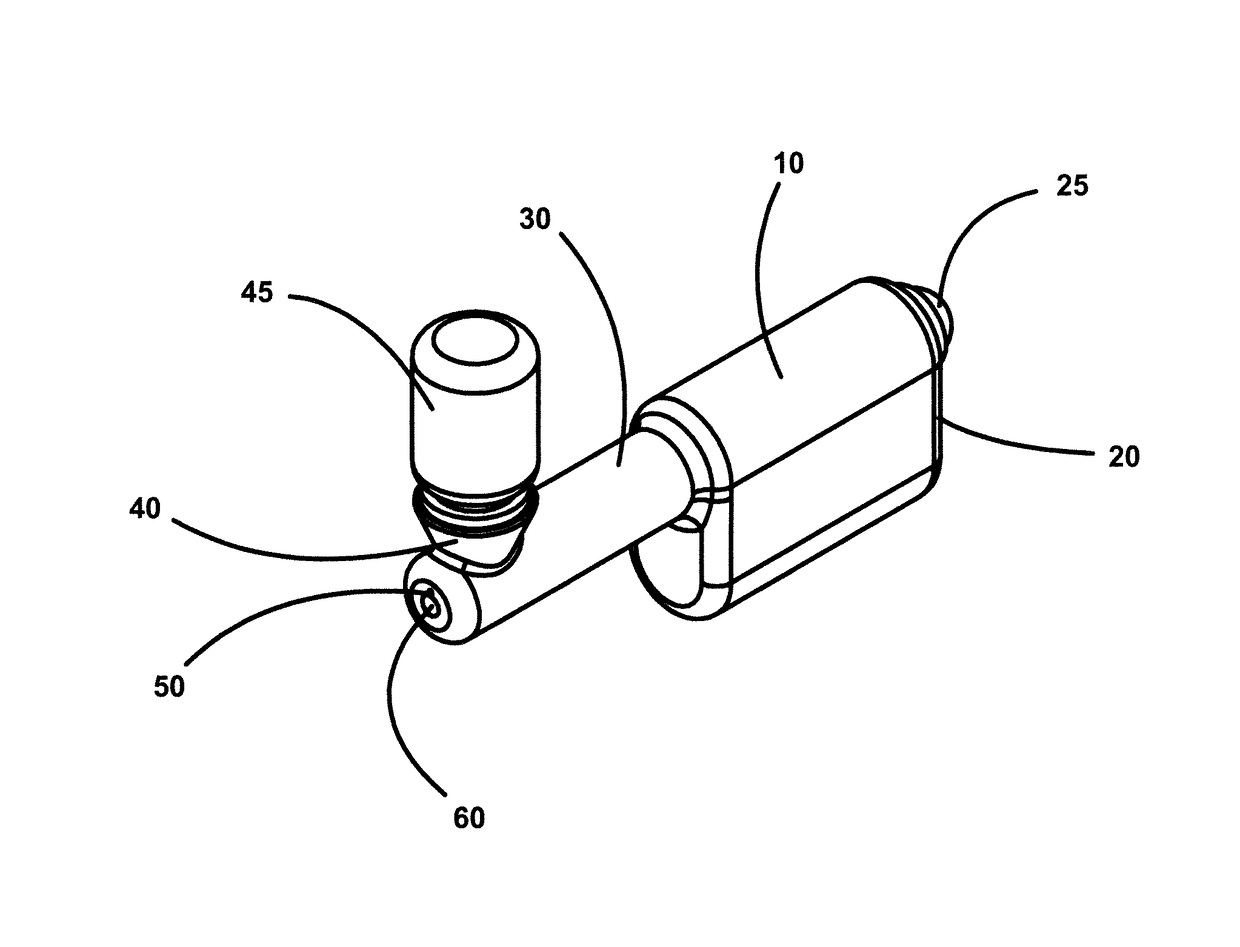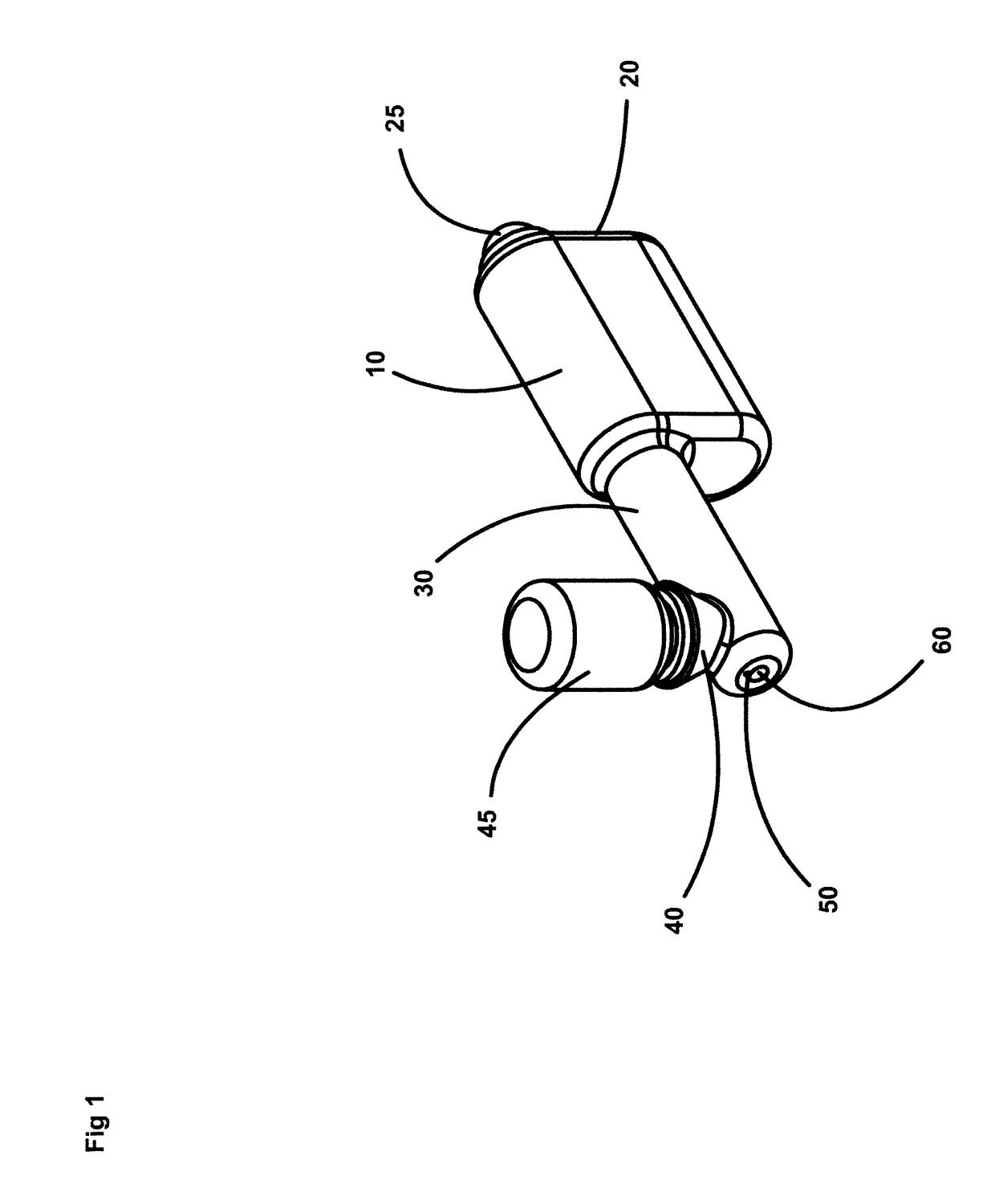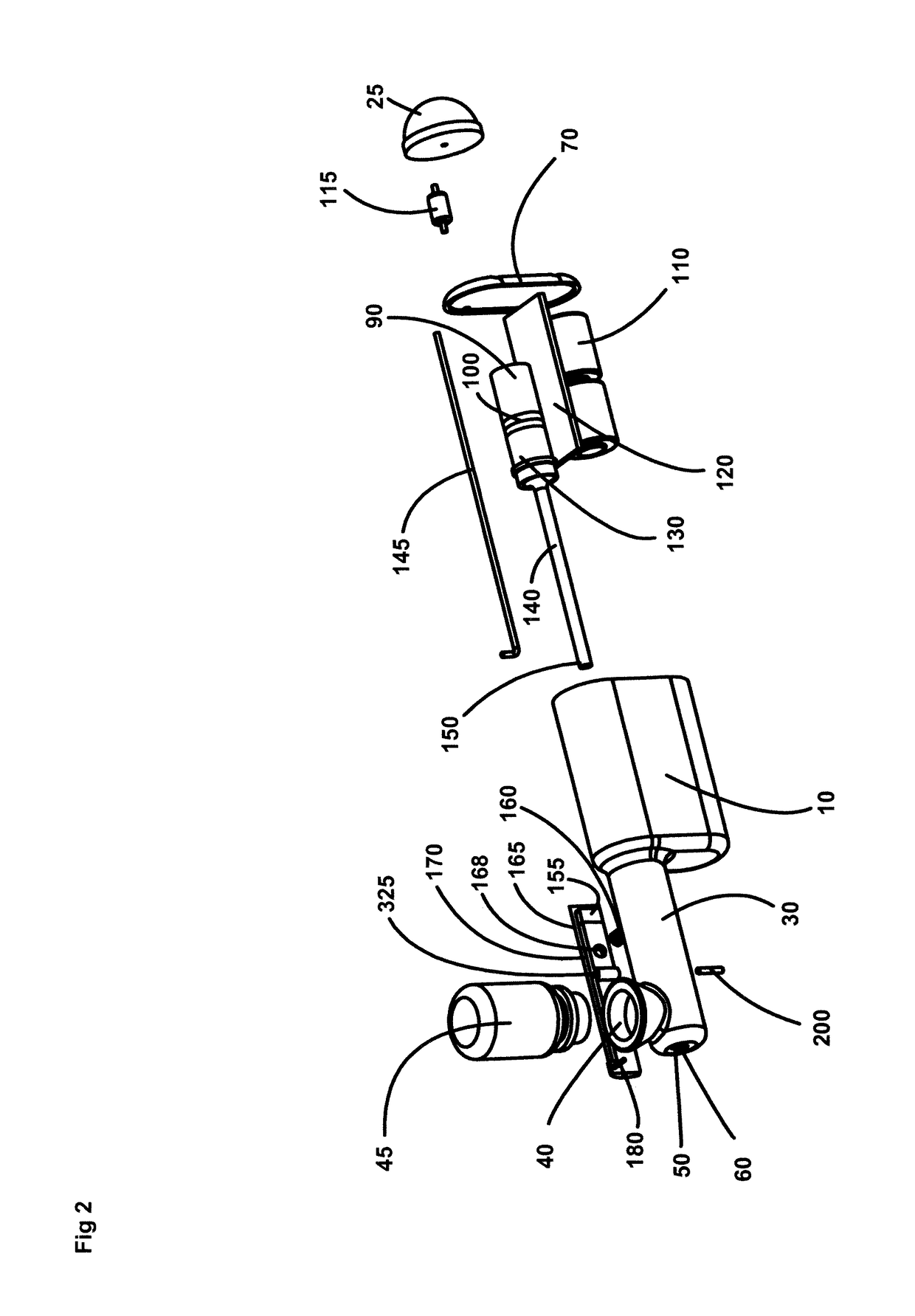Ultrasonic cosmetic applicator
a cosmetic applicator and ultrasonic technology, applied in the direction of packaging foodstuffs, packaged goods, transportation and packaging, etc., can solve the problems of insufficient gravity feed regulation, device inability to maneuver, and cost a great deal of money for that time period, so as to reduce motion, reduce the motion, and direct small uniform droplets.
- Summary
- Abstract
- Description
- Claims
- Application Information
AI Technical Summary
Benefits of technology
Problems solved by technology
Method used
Image
Examples
Embodiment Construction
[0020]Referring now to the drawings wherein like reference characters designate like or corresponding parts throughout, there is illustrated in FIG. 1, an ultrasonic cosmetic applicator 10 for spraying atomized droplets made from cosmetic materials and solutions, onto the body or face. The cosmetic applicator 10 has a back cover 20 which covers the internal components and helps with assembly. It has attached an elastic bulb 25. The elastic bulb 25 is pressed by the users finger to apply a small pressure into the bottle 45. This pressure aids in spraying the material emitted from the distal end 60. Internal components within the cosmetic applicator 10 are loaded from the back cover 20 of the cosmetic applicator 10 up to the distal end 60 where they are secured inside the unit. Along the length of the cosmetic applicator 10 is the frontal control mechanism 30. The frontal control mechanism 30 contains many features that make the cosmetic applicator 10 function as will be further discu...
PUM
 Login to View More
Login to View More Abstract
Description
Claims
Application Information
 Login to View More
Login to View More - R&D
- Intellectual Property
- Life Sciences
- Materials
- Tech Scout
- Unparalleled Data Quality
- Higher Quality Content
- 60% Fewer Hallucinations
Browse by: Latest US Patents, China's latest patents, Technical Efficacy Thesaurus, Application Domain, Technology Topic, Popular Technical Reports.
© 2025 PatSnap. All rights reserved.Legal|Privacy policy|Modern Slavery Act Transparency Statement|Sitemap|About US| Contact US: help@patsnap.com



